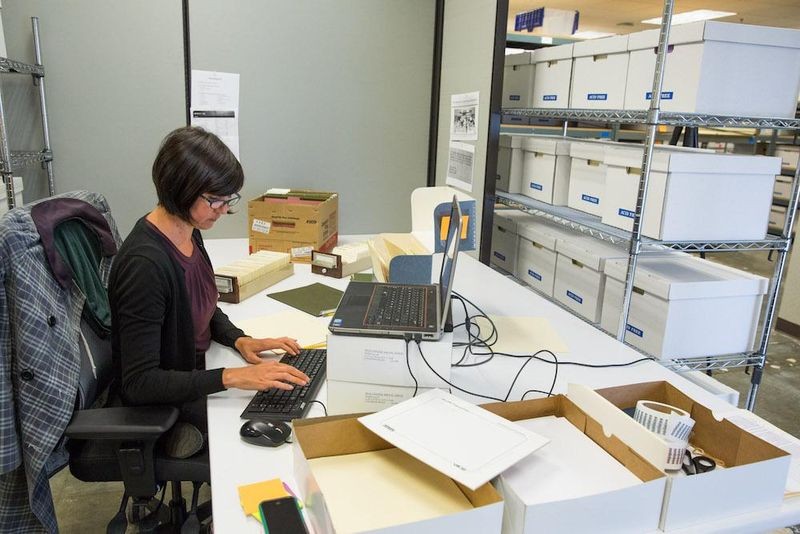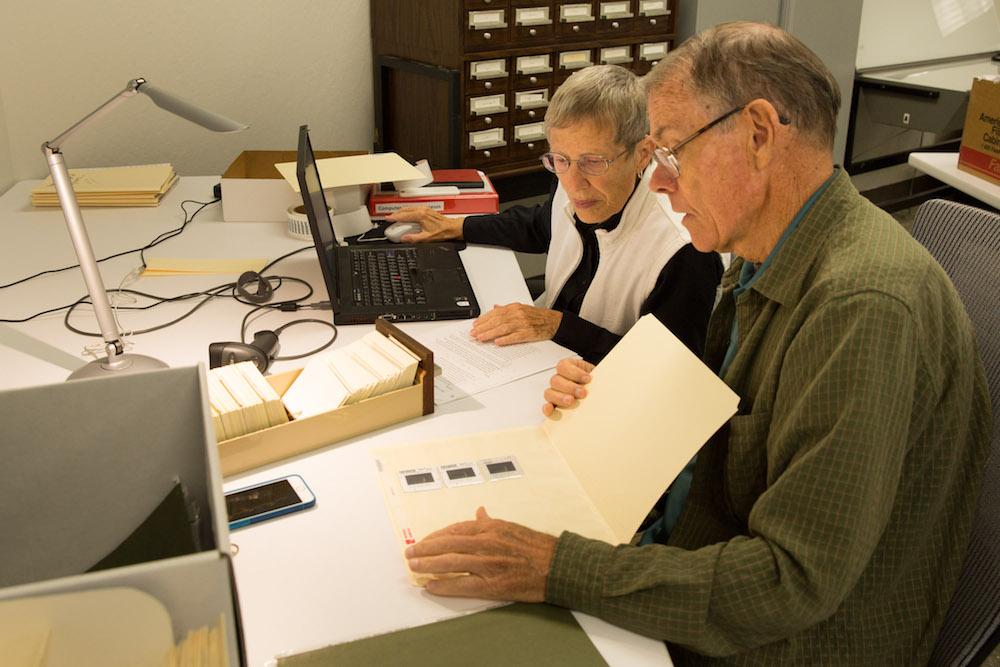
It took two and a half years, two full-time archivists, and nine part-time volunteers, but the Computer History Museum is thrilled to announce the completion of its Archives Processing Project (CHM APP). In 2015 CHM was awarded $274,560 from the Andrew W. Mellon foundation, administered by the Council on Library and Information Resources, to minimally process 26 of the Museum’s most valuable but hidden collections, totaling 1,944 linear feet of material.
The collections included in CHM APP represented approximately 40 percent of the Museum’s backlog in 2014. The collections document the Information Age in the United States and its ongoing impact on society, from 1921 through 2010, with the bulk of the material from 1945 through 1998. The collections contain correspondence, memoranda, business plans, laboratory notebooks, marketing material, computer manuals, conference proceedings, near print newsletters, rare market studies, and still and moving images. There are records and personal papers from corporations, CEOs, computer science luminaries, female entrepreneurs and inventors, and enthusiastic collectors. Scholars, historians, peer institutions, and the public now have unprecedented access to these unique records of the Information Age.

Archivist Kim Hayden works on cataloging the DEC photo library.
CHM APP includes many important collections, but of particular note are the Digital Equipment Corporation (DEC) records. At 1,238 linear feet of text, still and moving images, the DEC collection was the largest included in CHM APP, taking 14 months and over 5,000 man hours to complete. The DEC records represent the largest and most complete record of DEC in existence with material from 1947 through 2002. DEC’s revolutionary minicomputer bridged the gap between large-scale mainframes and personal computers. DEC created and led the minicomputer industry and by 1988 DEC was second only to IBM as the world’s largest computer company. However, DEC ultimately failed to thrive in the personal computer era.
Also of note are the Community Memory (CM) records. CM was an online forum for non-techies that sprang up in 1973 in Northern California. It was a pioneer of web-based discussion lists influencing Craigslist.org and early social networking sites. The collection documents how computer users began communicating and forming communities as soon as they were linked through timesharing systems. Any attempt to understand contemporary issues of identity on the web would need to start with social networking’s roots in the CM terminals of the early 1970s.
Also of note are the papers of Smalltalk developer Adele Goldberg, West Coast Computer Faire founder Jim Warren, and PowerPoint developer Dennis Austin. Smaller collections document some of the historically important competitors to IBM, including NCR, RCA, Honeywell, and the smaller Royal McBee, Philco, Librascope, and Bendix. These smaller collection materials are important as they demonstrate that in the nascent era of building commercial computers in the 1950s, there were many participants competing in a market with many unknowns. Throughout nearly all of the collections is documentation of how technology was marketed, what problems it was trying to solve, and the performance and limitations of then-current technology.
Every CHM APP collection has a finding aid available through the Museum’s catalog and the Online Archive of California. Additionally, a brief record is available through Worldcat. As a result of CHM APP, 24,351 catalog records were added to the online catalog and the number of researchers visiting the archive is up, with FY2017 marking the most researchers to date.

Volunteers Anna van Raaphorst and Dick Johnson catalog DEC slides using the DEC photo library’s card catalog, which was included in the donation.
I would personally like to thank the project’s two full-time archivists, Bo Doub and Kim Hayden for working so diligently to open these collections. The target expedited processing speed and the size of the collections were a challenge, but they persevered. I would also like to thank the dedicated CHM volunteers who put a combined 2,000+ hours of work into the project and without whom we would not have finished on time—Sherman Baggett, Pat Buder, Mike Gutman, Dick Johnson, Trudy Levy, Barry Sardis, Anna van Raaphorst, Ellen Wang, and Don Williamson. A special thank you is also deserved for Senior Curator Dag Spicer who served as a technical consultant at all phases of the project.